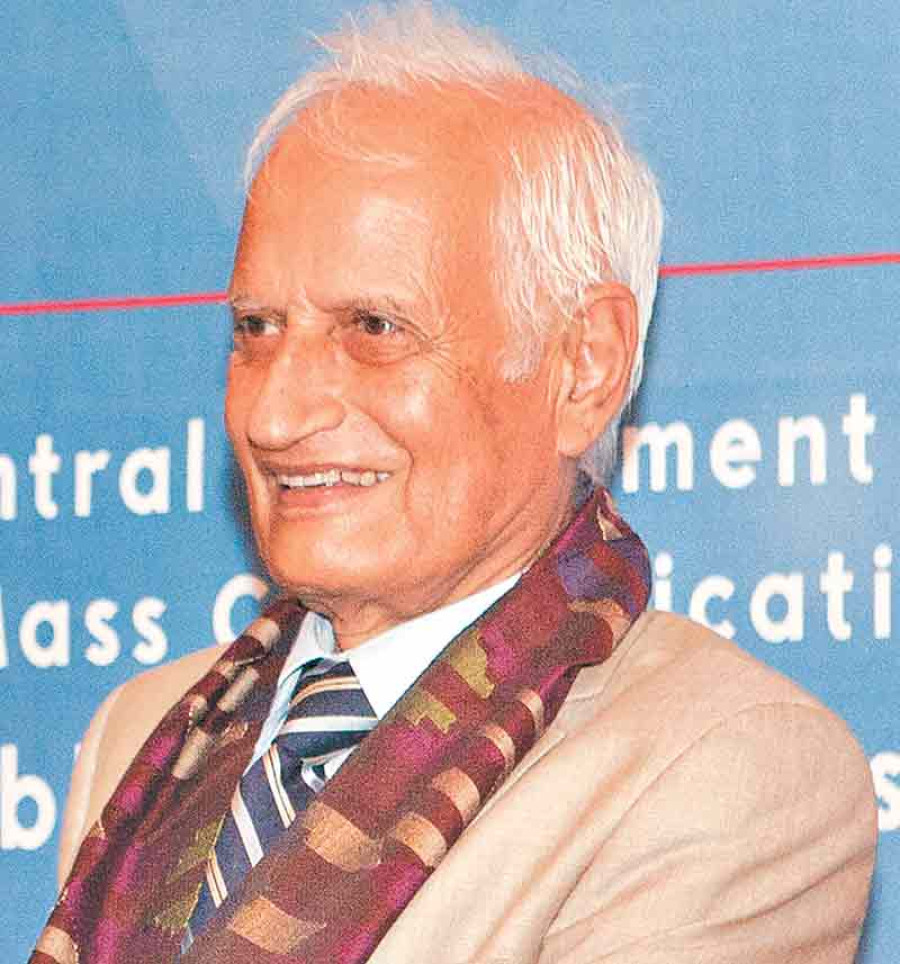Miscellaneous
A visionary educationalist
Despite being in his late 70s, Suresh Raj Sharma’s dedication to the improvement of the education sector hasn’t lessened. He still maintains a busy daily schedule for interactions or policy dialogue.
Binod Ghimire
Despite being in his late 70s, Suresh Raj Sharma’s dedication to the improvement of the education sector hasn’t lessened. He still maintains a busy daily schedule for interactions or policy dialogue. For the last six months, he and more than a dozen education experts have been busy preparing an education policy suitable to the present political system.
The modern history of Nepal’s education would be incomplete if we overlook his contribution to modernising university education, though some might call it promotion of private education. The Council for Technical Education and Vocational Training (CTEVT), Valley College and Kathmandu University, which changed the landscape of the country’s education sector, are the brainchild of Sharma and his friend Bhadra Man Tuladhar.
Born in 1940 in Khurkot, Sindhuli, he didn’t get modern schooling in his childhood though his parents could afford a Sanskrit teacher. He was already 11 when a primary school was established in his village. There was no option but to travel to Janakpur and Sonabarsa in India to complete his schooling.
Having gone through tough times to acquire a school education, Sharma had wanted to contribute to the academic sector from his early days. After completing Bachelor of Science from Tri-Chandra College, he got a government scholarship to study MSc in Chemistry in India. Incidentally, when he returned, Tribhuvan University was just starting MSc degree course at Tri-Chandra. He became a founding faculty member of the programme and taught for around 10 years before he leaving for London to do his doctorate.
Sharma became a professor two years after completing his PhD, which opened for him new avenues in formulating education policy which he had always wanted to do. The government appointed him to the National Education Committee (NEC) in 1977 which was tasked to draft an education policy with a target to expand school education to rural Nepal.
Drafting the curriculum was another important task of the committee besides formulating policies, and its three-year tenure was extended to nine years.
After travelling to different parts of the country as a key member of the committee, he realised the importance of skill and vocational education. Having performed well at the NEC, the government in 1985 asked him to establish an institution to promote technical and vocational training. After intensive research, he conceptualised the establishment of the CTEVT which materialised in 1989. The council is still the only institution that provides technical education and vocational training up to the intermediate level.
Meanwhile, his team had opened Valley College which provided specialised courses. The college established in Tangal later transformed into Kathmandu University. It was established following the restoration of democracy in 1990 and was designed to generate professional human resources suitable for the new political set-up. The credit for starting MBA, EMBA, pharmacy, environment science, biotechnology, mechanical and computer engineering, Buddhist studies and natural and human resource management courses goes to the university which is ahead of Tribhuvan University in terms of quality education. “He is an excellent planner and a visionary,” said Tuladhar who has known Sharma for the last 45 years. “What he has conceptualised has been implemented in the field.”
Now 78 years old, Sharma has a dream to set up a polytechnic school in his birthplace. And, that plan too is materialising. Former prime minister and CPN (Maoist Centre) Chairman Pushpa Kamal Dahal laid the foundation stone for the school, and has pledged to manage the necessary funding.
— By Binod Ghimire




 14.12°C Kathmandu
14.12°C Kathmandu








%20(1).jpg&w=300&height=200)

